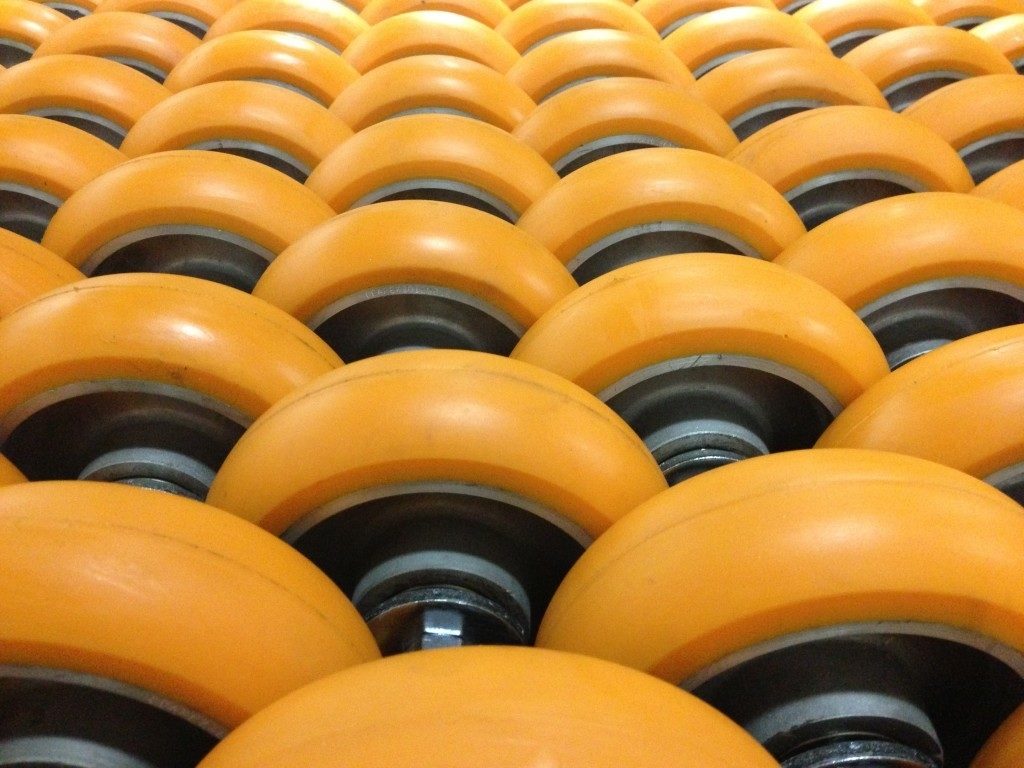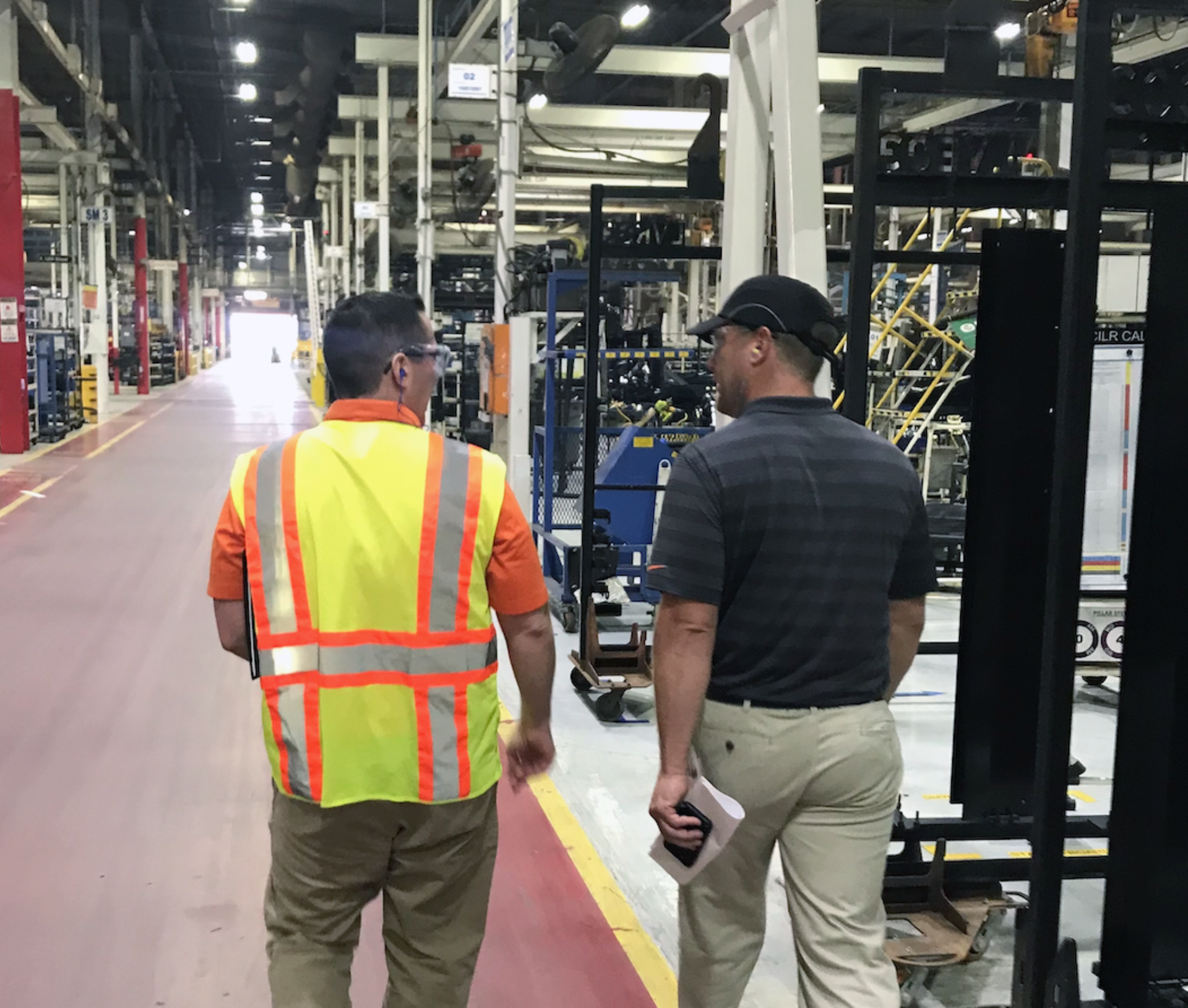800 Lb Rack Which Casters to Move Easy
Are you looking for casters to move heavy equipment? Here are the top 9 considerations you must keep in mind when buying casters and wheels to move heavy equipment.
1. Choose the Correct Weight Rating for Casters to Move Heavy Equipment
The first thing you need to look for is casters that are rated to carry the weight of your heavy equipment. This rating is called the weight capacity or load capacity. When a caster is rated for a given weight, that weight is the maximum recommended load per caster or wheel based on intermittent operation over smooth floors at speeds not exceeding three m.p.h., with no shock loading or adverse environmental conditions.
Casters come in three weight ranges. Light duty casters are for loads of up to 500 lbs. Medium duty casters are for weights of between 501 and 2,000 lbs. And heavy duty casters are for weights of more than 2,000 lbs.
Just remember that casters are rated for the weight capacity of each caster, whether swivel or rigid, and not for the entire set of casters. So, before you buy your heavy-duty casters, first find the weight capacity you need for each caster. Do this by adding the weight of your piece of heavy equipment to the weight of the cart, truck or platform that the casters will be fitted under. Then add a further 33% of this weight as a safety margin. Then divide that total weight by the number of casters on your cart, truck or platform. The number you get is the weight rating you must pick for each caster on your cart.
Keep in mind that if you choose a caster that is under-rated for the heavy loads you move, you risk the caster failing (and your heavy equipment colliding with a worker), or you risk your workers sustaining injuries from overexertion, since under-rated casters make loads harder to push.
Top heavy-duty brands from Caster Connection include CC Apex, CC Apex HD, CC Stark, CC Stout, CC Stout HD and CC Nylex.

2. Pick a Large Enough Width and Diameter for Casters to Move Heavy Equipment
All other things being equal, casters with large wheels are easier to move than casters with smaller wheels. Larger wheels also have more strength to carry heavier loads and handle heavier weights. Casters come in diameters ranging from 1 inch all the way up to 25 inches. Aim to buy casters that have diameters of at least eight inches.
Heavy loads also call for wider wheels. Casters come in wheel widths ranger from ½ an inch all the way up to 8 inches. Aim for casters that have wheels that are at least three inches wide.

3. Select a Suitable Wheel Hardness for Casters to Move Heavy Equipment
The wheels on casters that are designed to move heavy equipment are made from a number of materials, including cast iron, ductile steel, phenolic, nylon, and polyurethane. Make sure you pick the wheel material that is suited to your application.
Casters made from phenolic and other hard materials, for example, collect staples, metal particles and other floor debris that embeds into the wheel's tread. This debris accumulates to the point that the wheels begin to carve grooves into floors, leading to costly repairs.
The heavy-duty casters least likely to collect debris are made from durable polyurethane. The treads on these casters are soft enough to reject debris (it just bounces off). The wheel doesn't damage or mark floors, helping to lower time and money spent on floor upkeep.

4. Get an Extended Swivel Lead for Casters to Move Heavy Equipment
Heavy loads are harder to push, pull and maneuver than lighter loads because they have a high rolling resistance. This leads to lower-back injuries and physical overexertion—the #1 cause of workplace injuries.
A primary cause of high rolling resistance when it comes to casters is the length of the swivel lead. The swivel lead (also known as the swivel offset) is the distance from the vertical centerline of the caster swivel section to the vertical centerline of the wheel. Casters with zero or standard swivel leads are harder to push, pull and maneuver than casters with extended swivel leads. The heavier your load, the more you need extended swivel leads on your casters.

6. Beware of Cheap Kingpins for Casters to Move Heavy Equipment
Even casters that are designed to move heavy equipment fail prematurely. In most cases, the leading cause of failure is the kingpin. The kingpin is the rivet, threaded stud, or bolt with nut, that holds together the mounting plate and fork assembly of a swivel caster.
Caster kingpins are the most expensive thing on a caster to replace, and they also result in the highest total cost of ownership. So, before you buy a set of heavy-equipment moving casters, beware of cheap kingpins. Look for casters that have high-quality rigs, such as those with forged kingpins.
Also consider buying casters that have no kingpin at all. Kingpinless casters like the 12" X 3" CC Apex HD Kingpinless Swivel Caster handle heavy loads and offer great durability because of their lack of a kingpin.

7. Think Low (or No) Maintenance for Casters to Move Heavy Equipment
Some heavy-equipment moving casters require time-consuming, regular greasing through a Zerk fitting to prevent seizing. Or they have a design that features an open raceway that collect debris in the upper bearing, damaging the caster and requiring regular servicing.
When you buy your heavy-equipment moving casters, look for units that have caster rigs that require no greasing, and whose design keeps debris out of the raceway naturally. These maintenance-free casters outlast traditional casters, and perform better. This translates into less downtime for you, and greater productivity.

8. Buy The Right Number and Type of Casters to Move Heavy Equipment
Another thing to consider when selecting heavy-equipment moving casters is that you buy enough, and enough of the correct type. There are essentially two types of casters: swivel and rigid. Swivel casters, as the name implies, swivel 360 degrees. Rigid casters, on the other hand, are fixed and only travel in one direction.
Typically, an industrial cart or platform truck is fitted with four casters. Two swivel casters on the front for maneuverability and two rigid casters on the back for directional control. But to move heavy equipment, you should increase the number of casters to at least six. Position one swivel caster at each of the four corner, and one rigid caster at the halfway point of the two longest sides.

9. Put the Brakes On Casters to Move Heavy Equipment
The heavier your load, the more dangerous it is if it gets away from you. So consider buying heavy-duty casters that are fitted with brakes that lock the wheels in place when stationary to prevent the load from moving if left unattended.

Conclusion
One final thing to consider when choosing heavy equipment moving casters is the company that makes the casters. Look for a company that offers more than simple wheels and swivels. Look for a manufacturer with technical expertise and a track record of using a consultative approach to solving heavy-equipment moving challenges like yours.
If you are in the market for heavy-duty, check out our wide range of heavy equipment moving casters.

Source: https://casterconnection.com/blog/choose-casters-heavy-equipment
0 Response to "800 Lb Rack Which Casters to Move Easy"
ارسال یک نظر